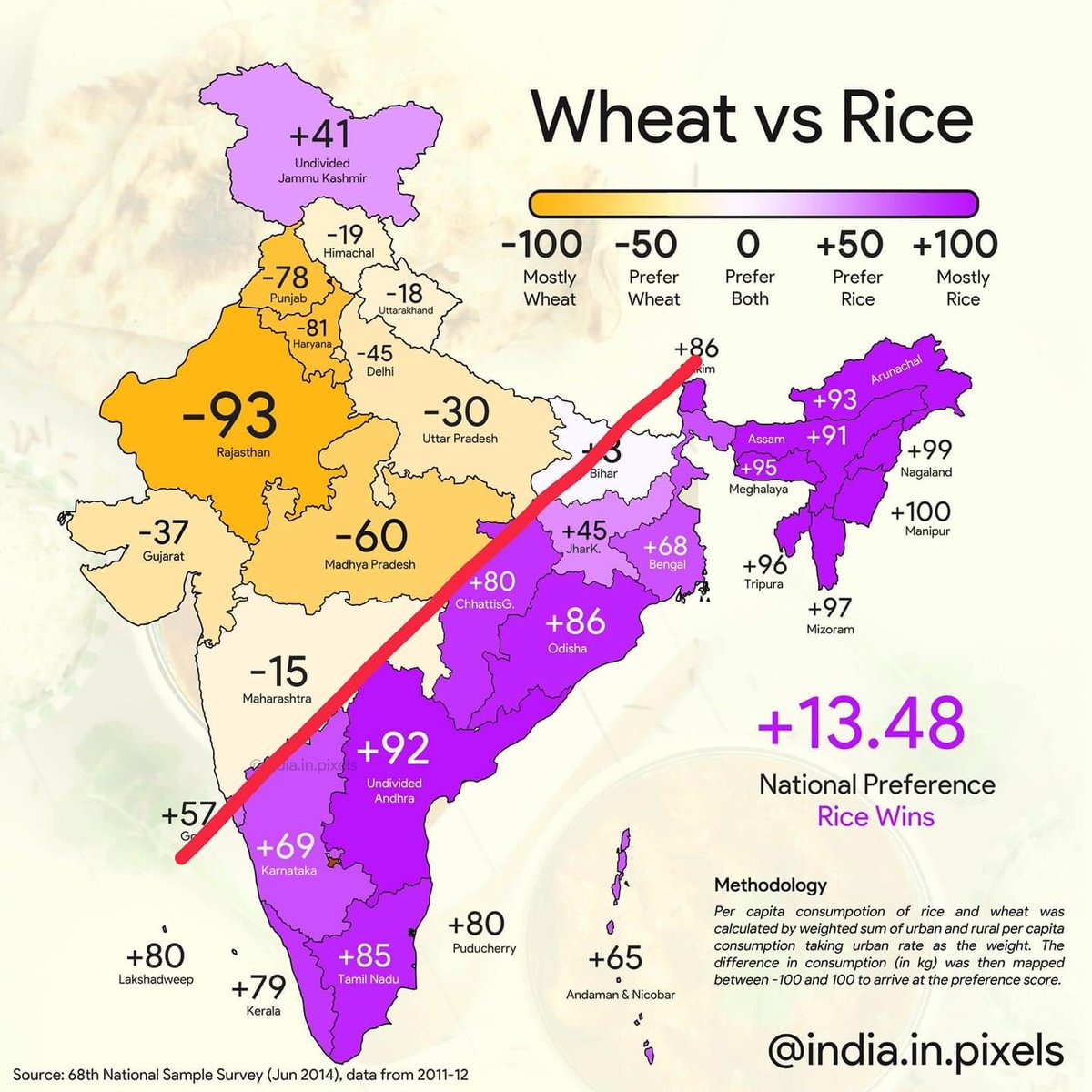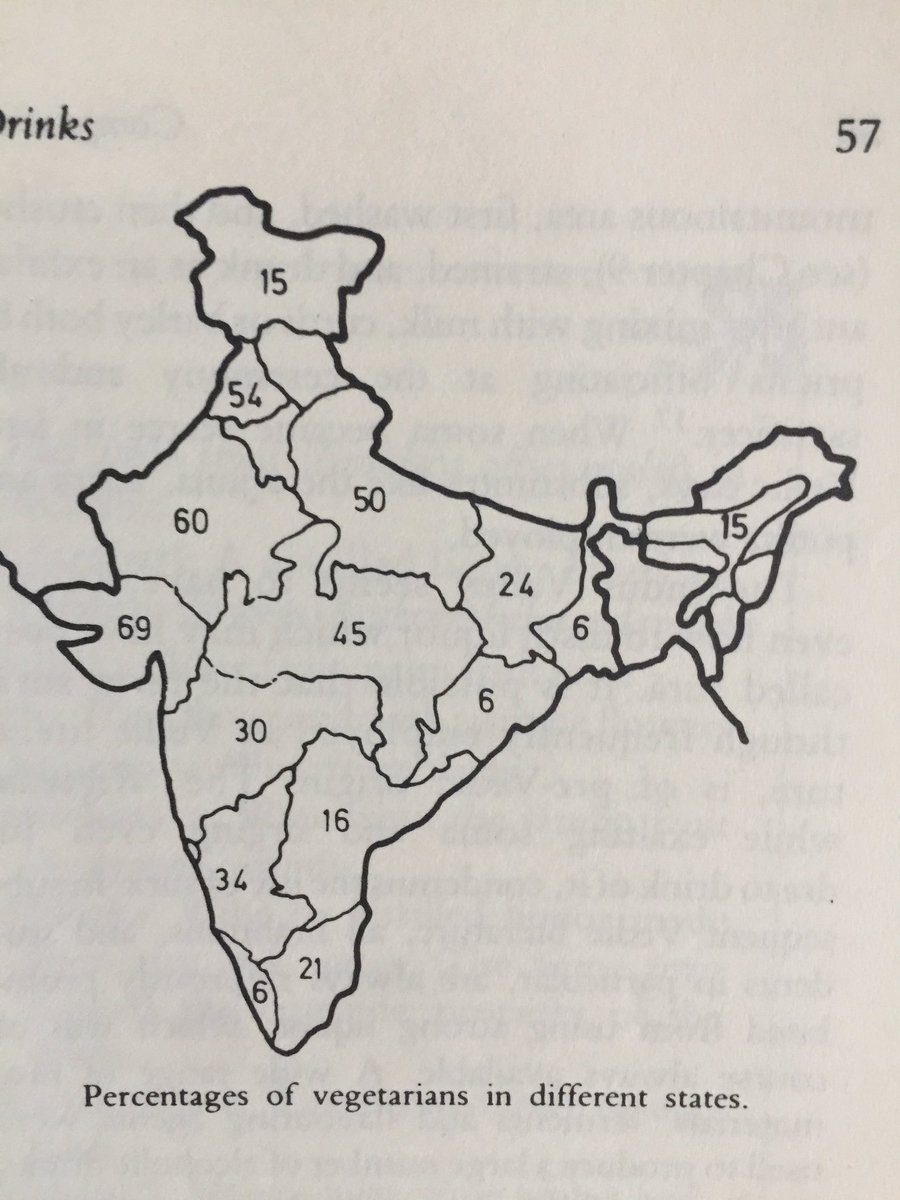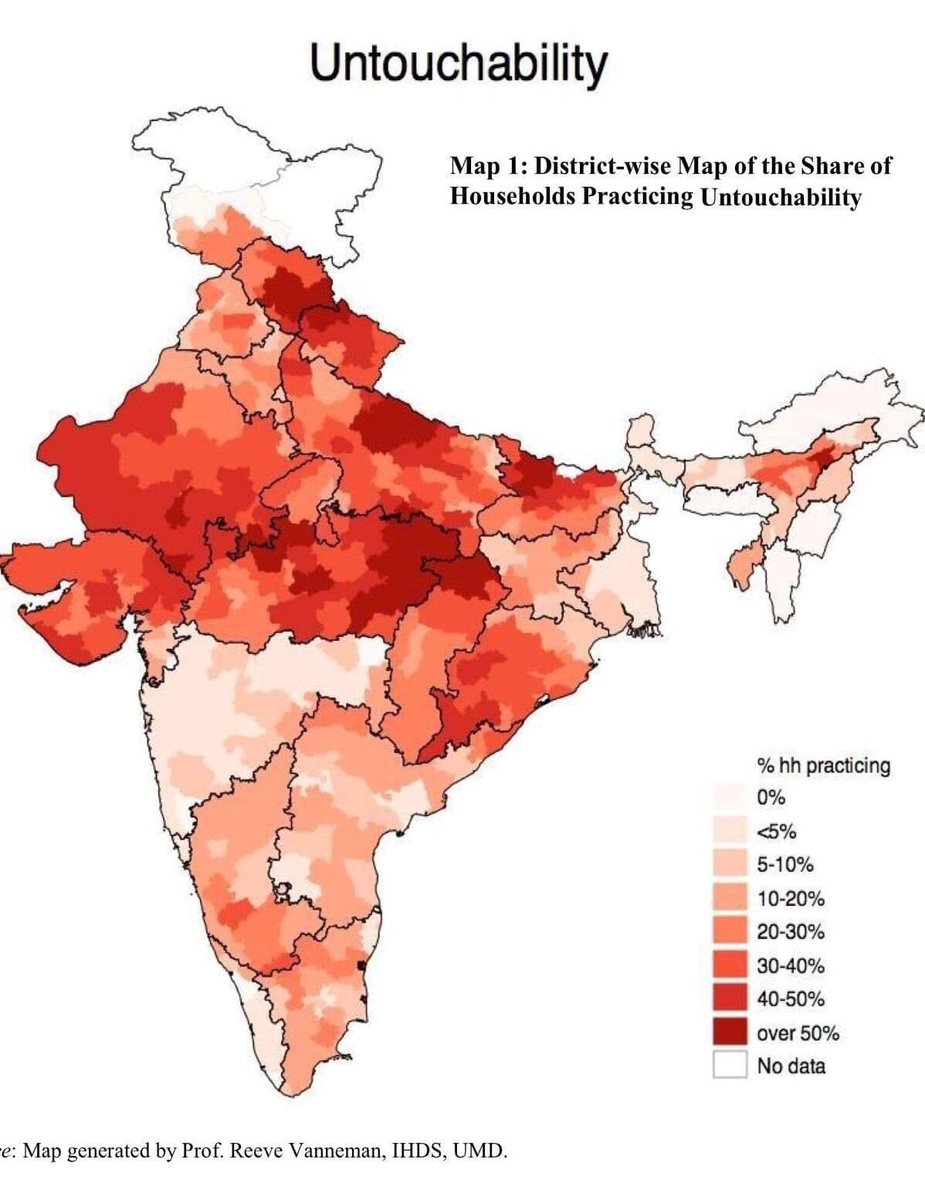Data visualization: Vegetarian-Non-Vegetarian/Rice-Wheat Line: India. Also clearly demarcates the cow belt.
From the questions, I probably should put down my provisional thinking why that might be so here. Level 1 explanation: wet-rice works well with fish ecology of the river valley civilizations.
Level 2: Complex story. Linked to vegetarian reform movements like Jainism, born in the Gangetic valley in the east, but successfully migrating west via trade/pilgrimage to the dry zones of Rajasthan/Gujarat. Dominant there. As they sit on the trade networks leading to the...
... of Indus River and Narmada in Gujarat.
Overwhelms coastal cultural preference for fish among caste Hindus on the upper west coast (see level 4 explanation below).
Overwhelms coastal cultural preference for fish among caste Hindus on the upper west coast (see level 4 explanation below).
Jainism radically reshapes Hinduism of the dry zone of Rajasthan/Gujarat and Baniya/Marwari culture that is both Hindu/Jain (Indian Constitution says ok). Dominant ruling elites of India today Ambanis, Agarwals, Oswals, Maheshwaris are vegetarians. They criss-cross the Hindu/Jain
...barrier easily.
The opposite is also true: subaltern classes/castes in India have lower rates of vegetarianism.
Level 3: Radically reshapes Brahmanism of the dry zone (and elsewhere).
The opposite is also true: subaltern classes/castes in India have lower rates of vegetarianism.
Level 3: Radically reshapes Brahmanism of the dry zone (and elsewhere).
Level 4: Sanskritization — groups that want to climb the caste ladder mimic Brahmanic vegetarian norms (now reshaped by Buddhist/Jain critique of animal sacrifice).
Level 5: Brahmins in Kashmir, Bengal and Kerala continue to eat meat...
Level 6: Brahmins in Kerala, mimicking the norms of dominant Arab Muslim and Syrian Christian classes, continue to eat beef...
Level 7: your story...
Level 6: Brahmins in Kerala, mimicking the norms of dominant Arab Muslim and Syrian Christian classes, continue to eat beef...
Level 7: your story...
To add another level of complexity Khushbu Shah notes that anecdotally more women are often vegetarian (in India in my experience, my mother and grandmothers for instance) in her experience in the diaspora. I agree with her. But I do not have any data on that.
The relationship between gender and conservation of some aspects of culture is another fascinating byway here. Attire. Vegetarianism.
Assumes ritual vegetarianism is difficult to maintain unless food is abundant. Shown by its importance to vegetarian religions born in cities in the rich Gangetic valley. In contrast, a primary vegetarian w/legumes, w/ little opportunistic addition of fish/small meats, typical.
Of course that Buddhism and Jainism were born in the urban centers of the Gangetic river valley are coincidental, until it happens. Then it becomes structural!
Matches pretty close to KTAchaya’s map from 1981 (of course states have been added and broken up since then).
Satish K Jaha added an excellent point about why some Maithili Brahmins eat meat but avoid onion/garlic... Besides the ecological, it is the prevalence of tantrik cult in this region. There is one geographical line running from Tibet to tarai region in Nepal and it goes further,
... straight to mithila region and reaches Assam - Bengal. Around this line one would find people relishing non-vegetarian food, particularly fish. Tantrik rituals are incomplete without fish!
Both rice and wheat often replace millets, etc. at some point and places. There is a wet-rice/millet boundary between the deep Dravidian river valleys and the adjacent interior highlands that developed with river-valley based water-works and states around 1000CE (see Morrison).

 Read on Twitter
Read on Twitter





